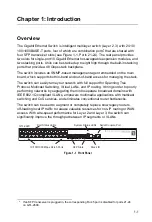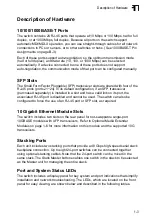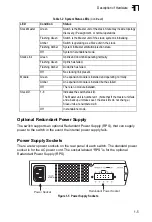
2-1
Chapter 2: Network Planning
Introduction to Switching
A network switch allows simultaneous transmission of multiple packets via
non-crossbar switching. This means that it can partition a network more efficiently
than bridges or routers. The switch have, therefore, been recognized as one of the
most important building blocks for today’s networking technology.
When performance bottlenecks are caused by congestion at the network access
point (such as the network card for a high-volume file server), the device
experiencing congestion (server, power user or hub) can be attached directly to a
switched port. And, by using full-duplex mode, the bandwidth of the dedicated
segment can be doubled to maximize throughput.
When networks are based on repeater (hub) technology, the distance between end
stations is limited by a maximum hop count. However, a switch turns the hop count
back to zero. So subdividing the network into smaller and more manageable
segments, and linking them to the larger network by means of a switch, removes this
limitation.
A switch can be easily configured in any Ethernet, Fast Ethernet, Gigabit Ethernet,
or 10G Ethernet network to significantly boost bandwidth while using conventional
cabling and network cards.
Summary of Contents for GTL-2690
Page 2: ......
Page 4: ......
Page 18: ...xiv Figures ...
Page 26: ...Introduction 1 8 1 ...
Page 34: ...2 8 Network Planning 2 ...
Page 44: ...3 10 Installing the Switch 3 ...
Page 56: ...A 4 Troubleshooting A ...
Page 62: ...B 6 Cables B ...
Page 73: ...Index Index 3 V VLANs routing 2 6 tagging 2 5 W web based management 1 2 ...
Page 74: ...Index Index 4 ...
Page 75: ......






























